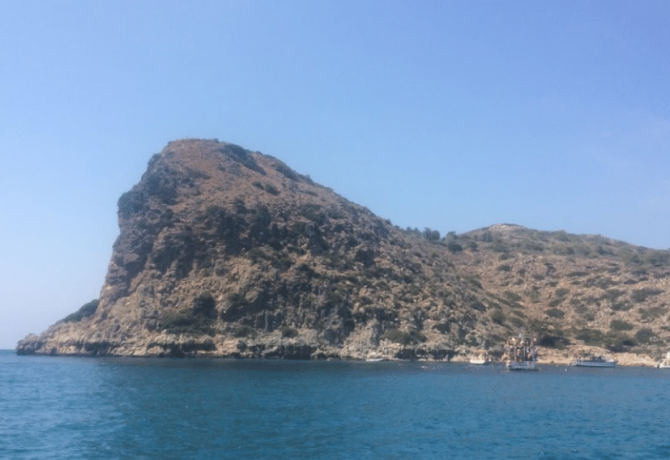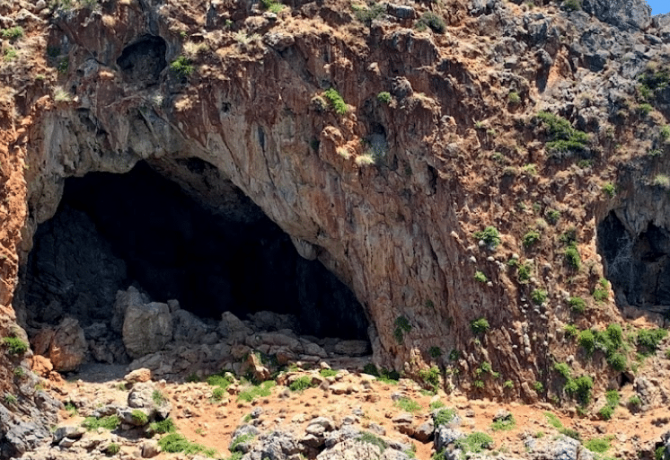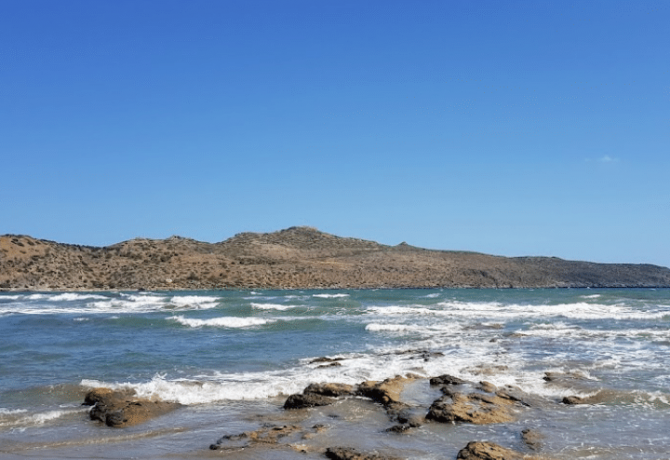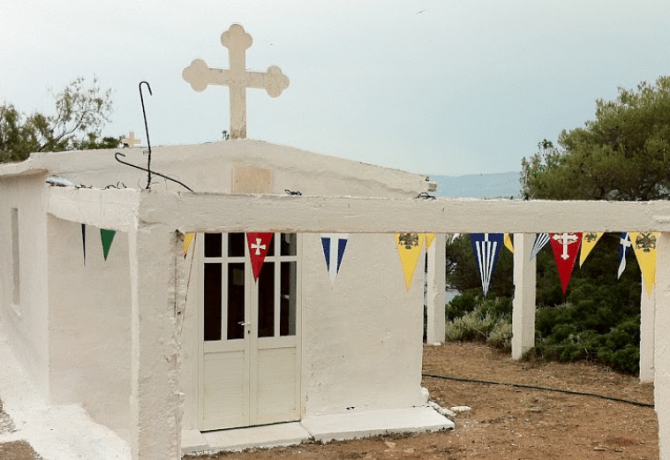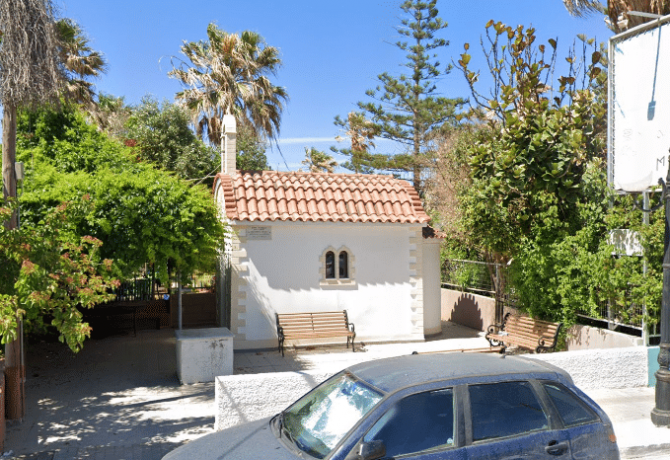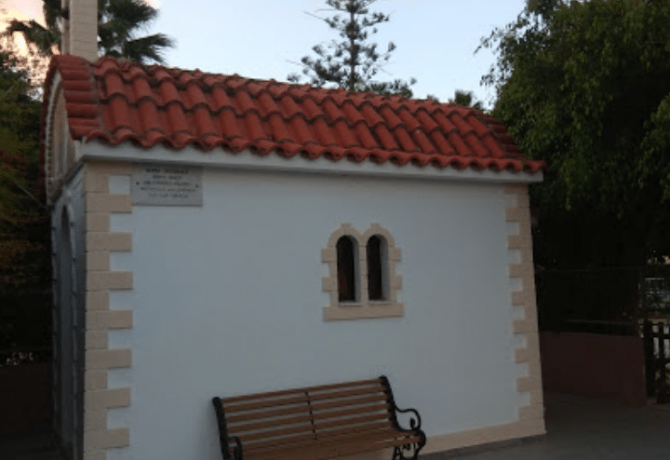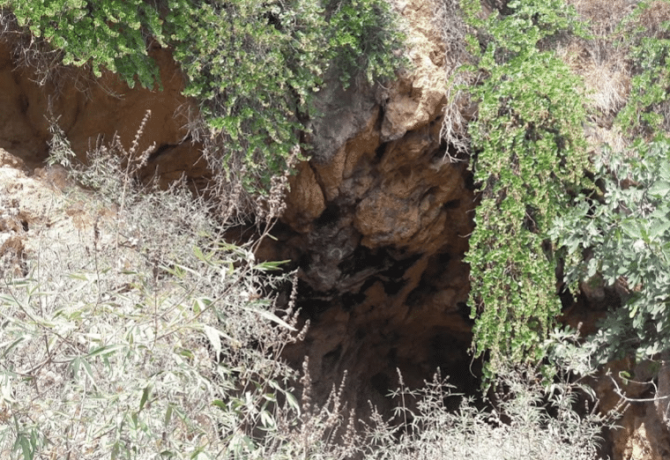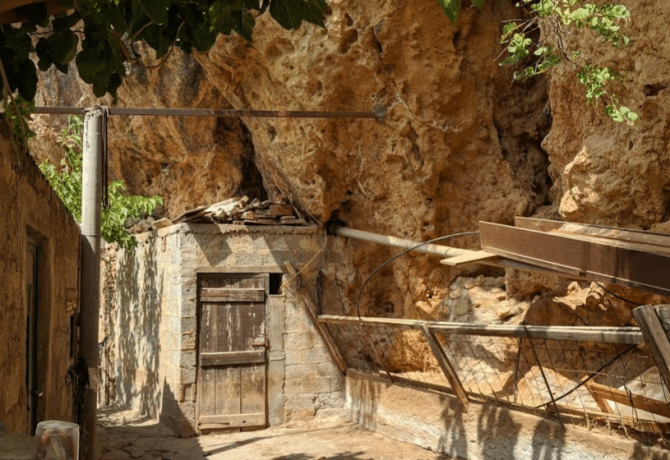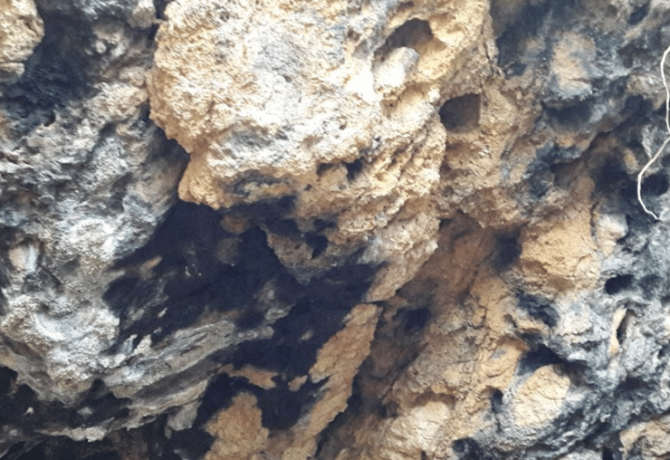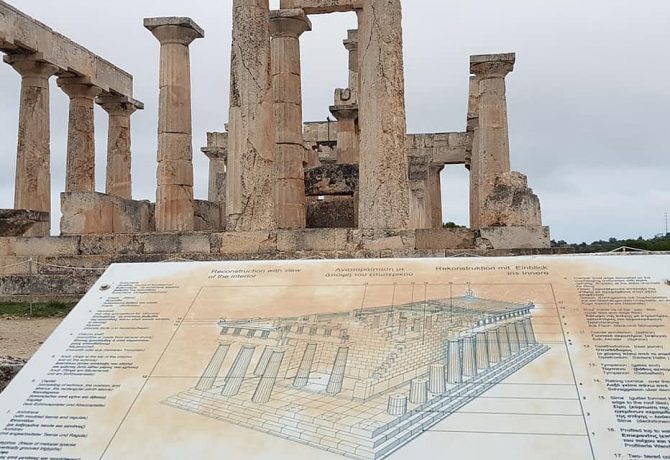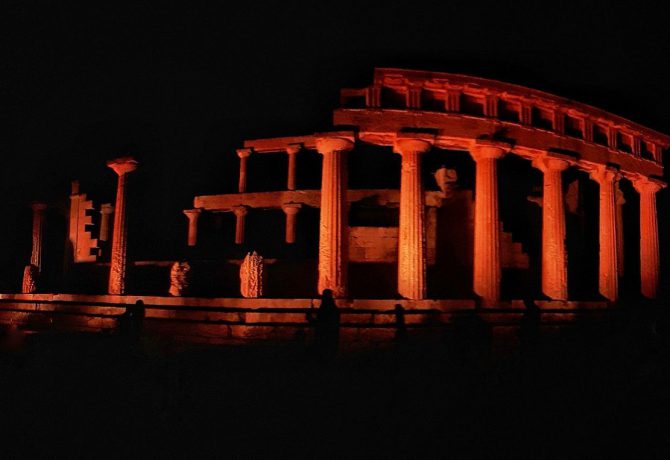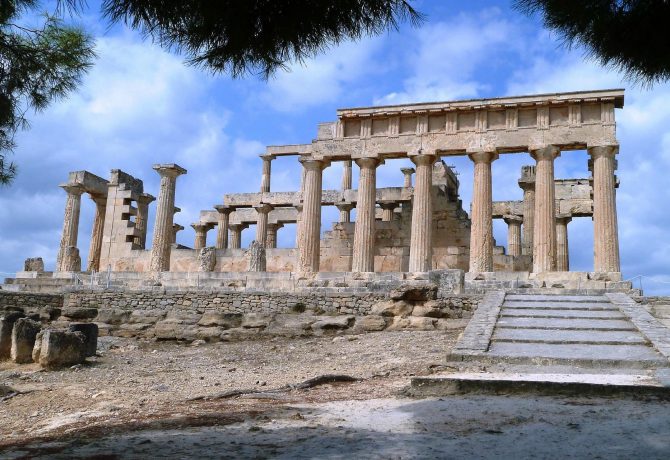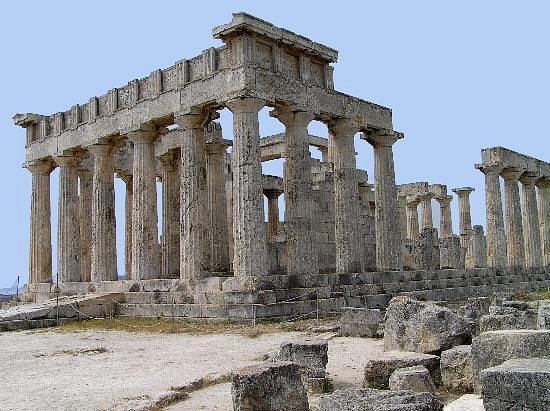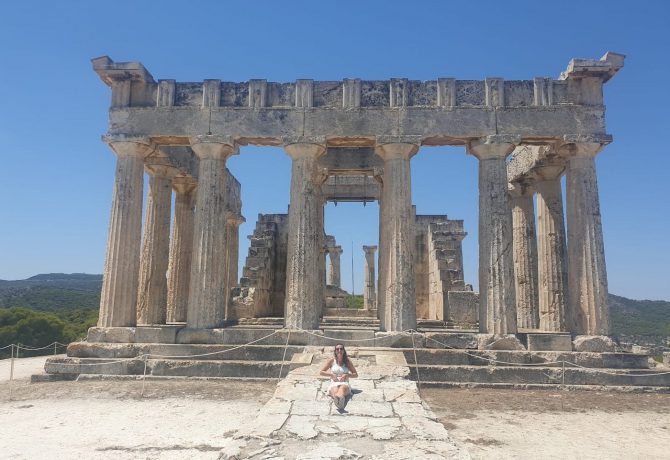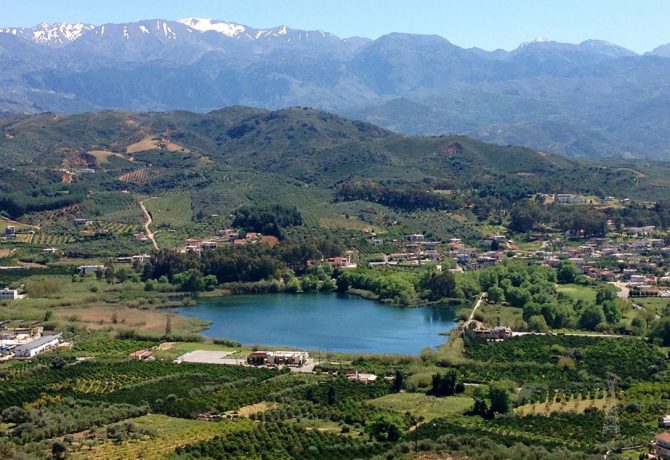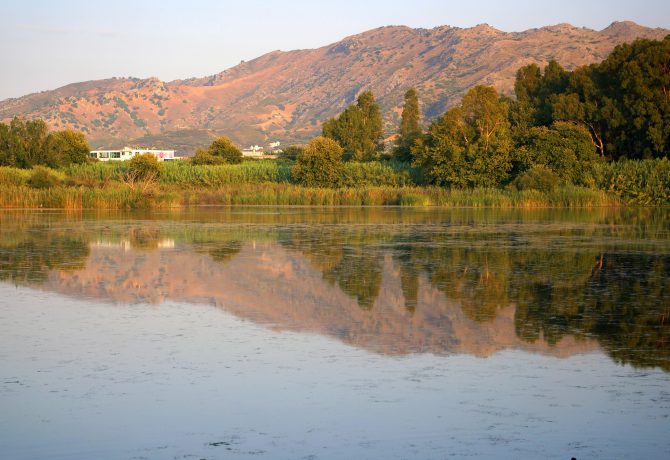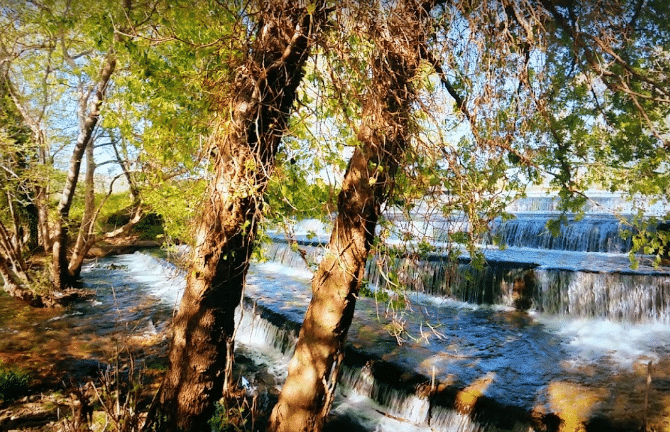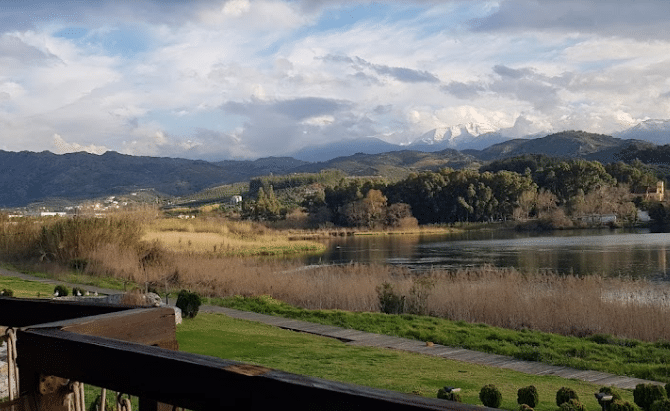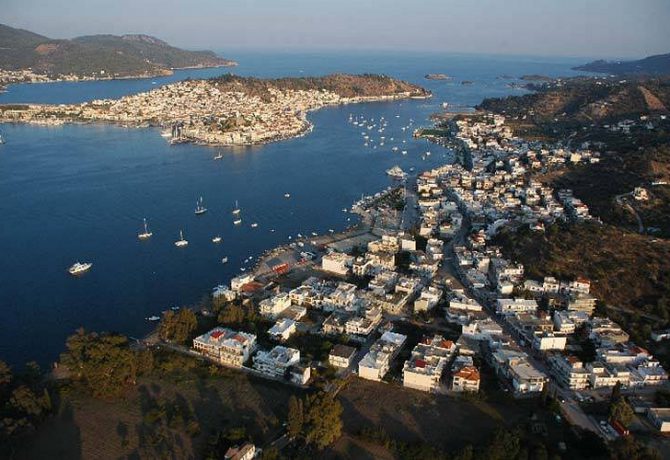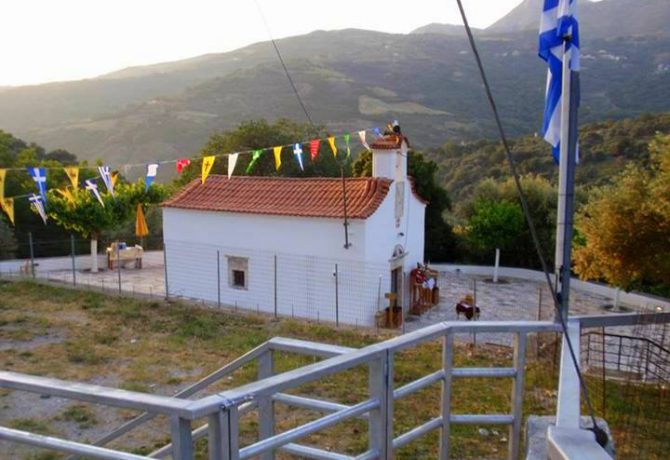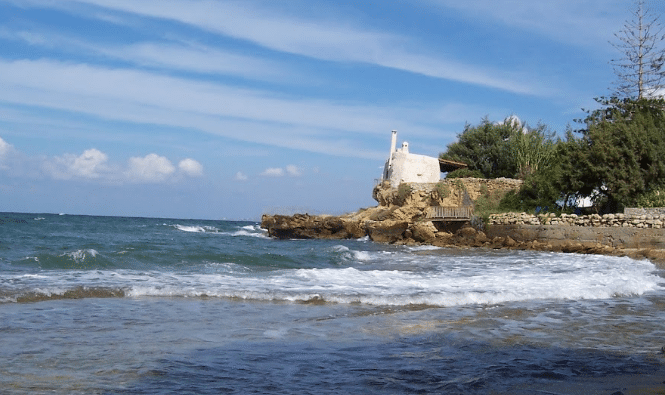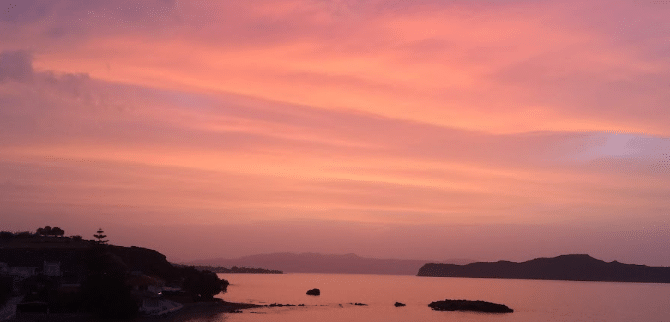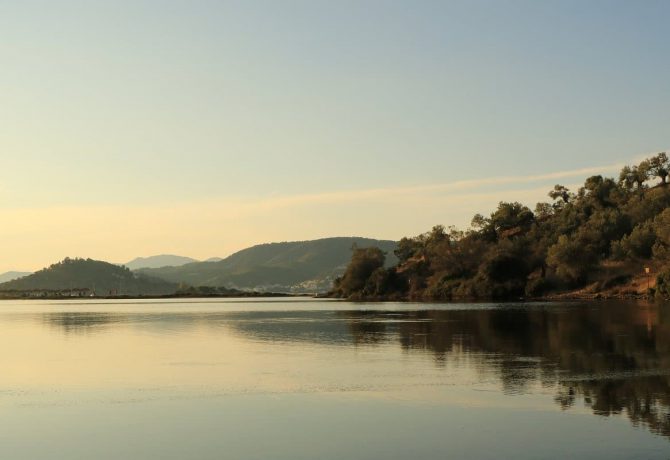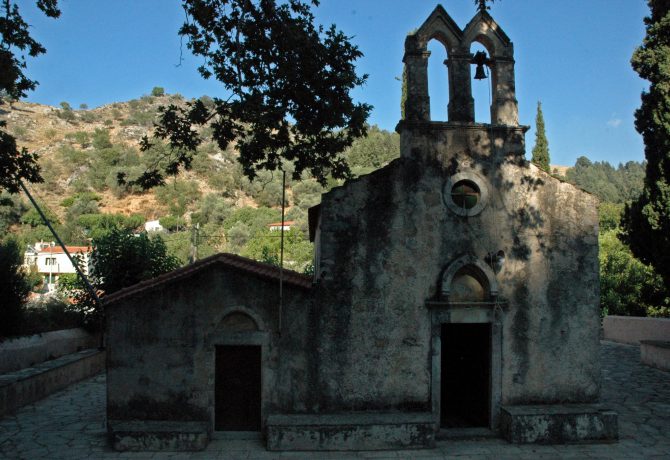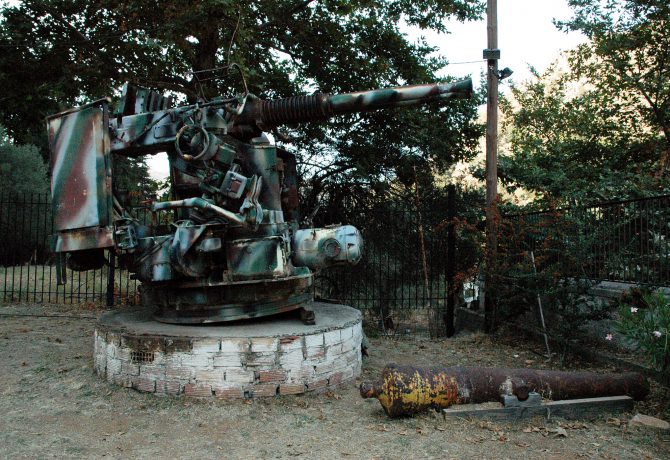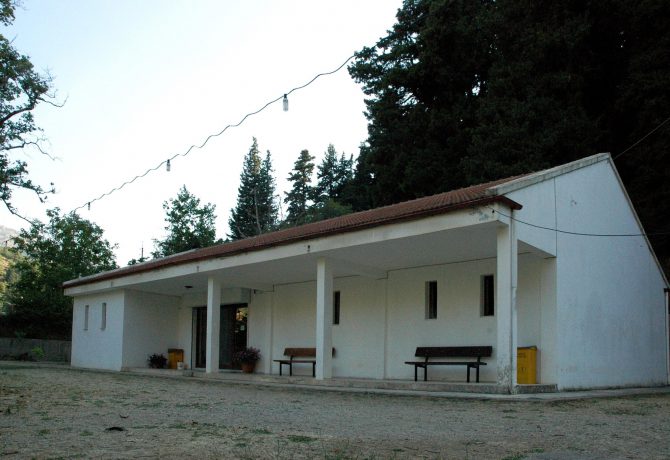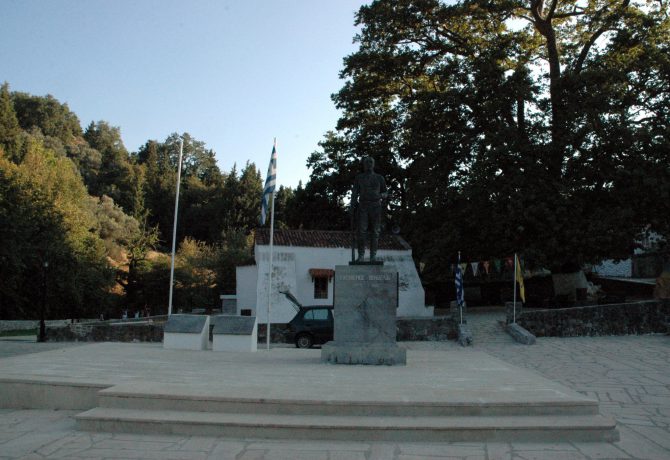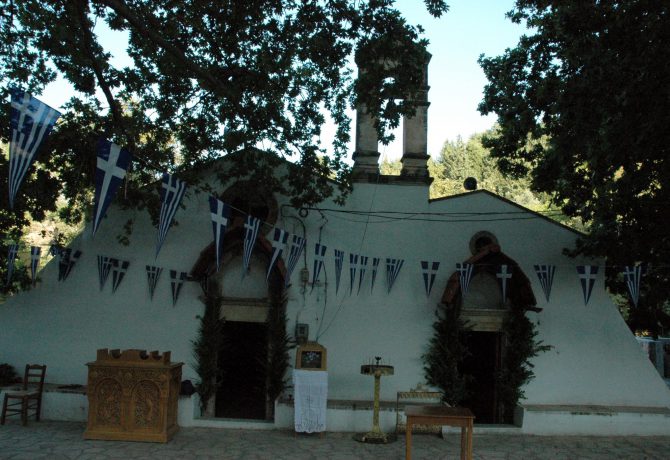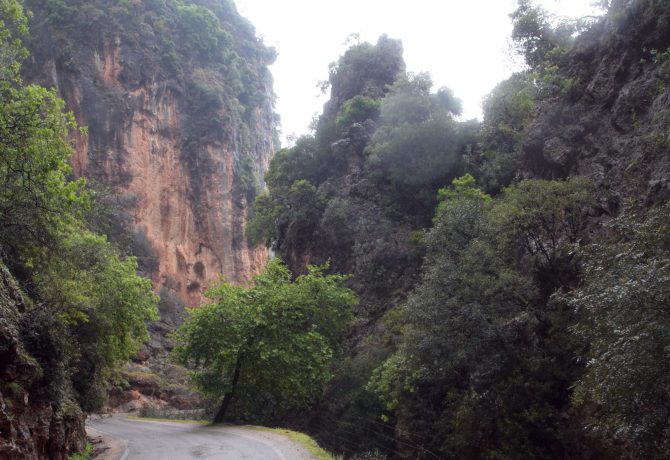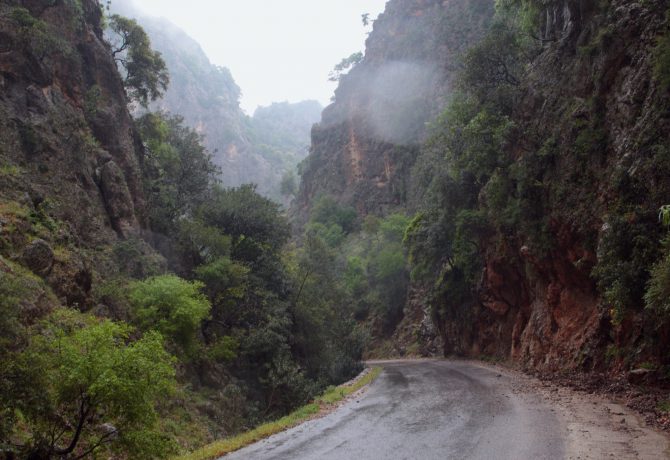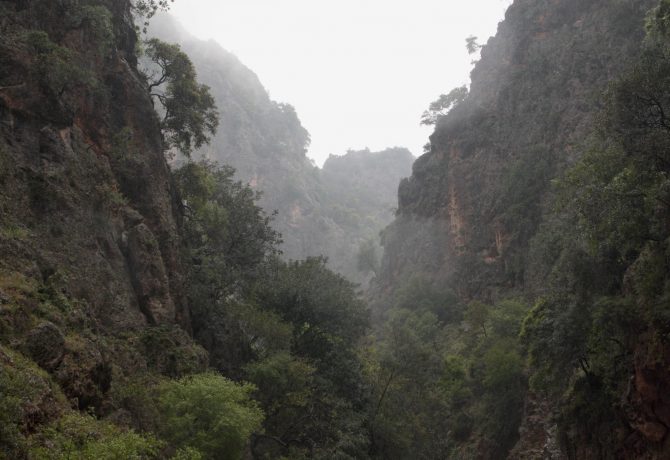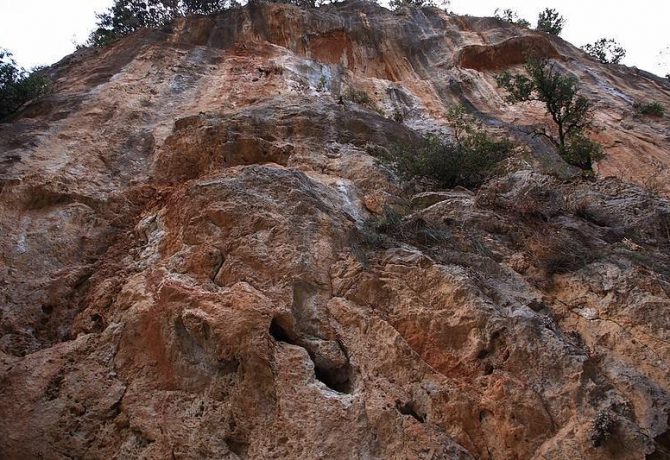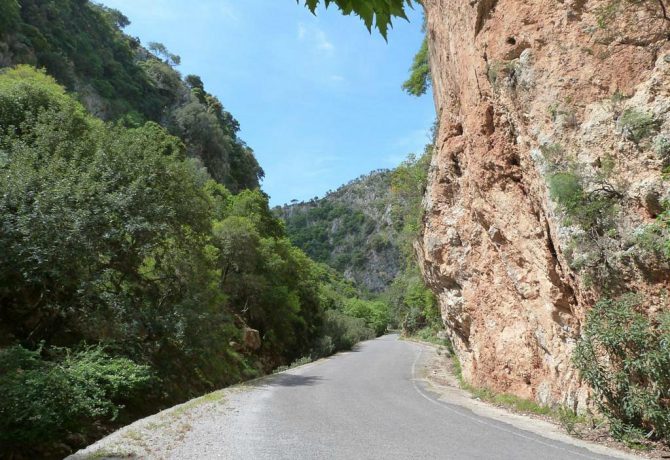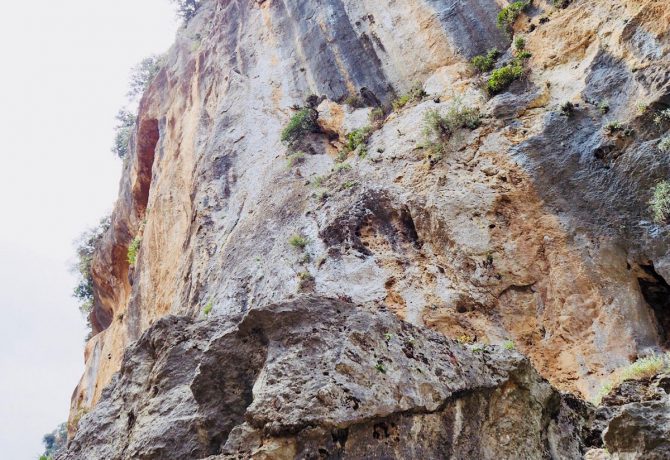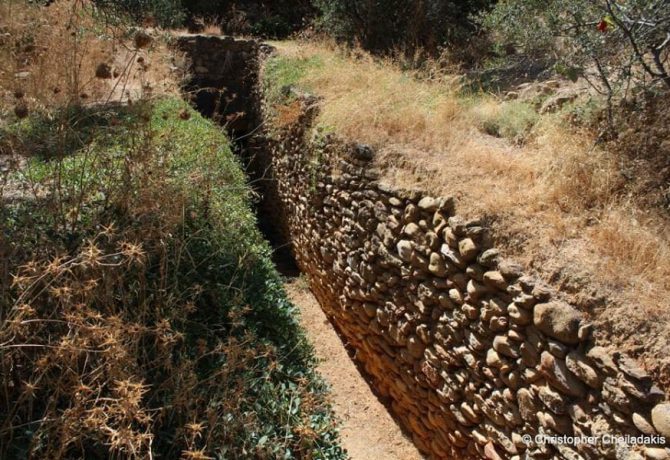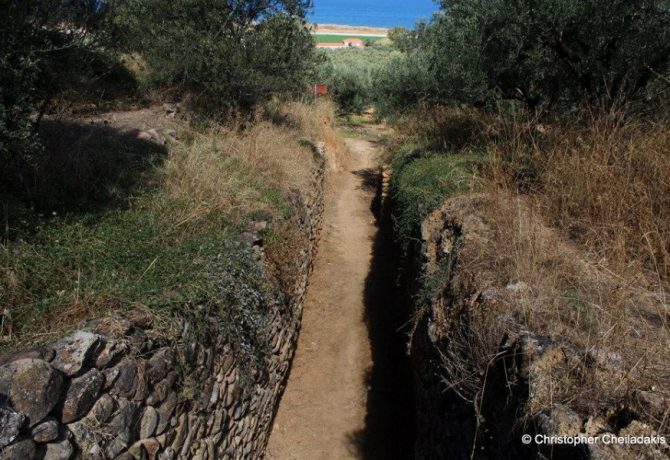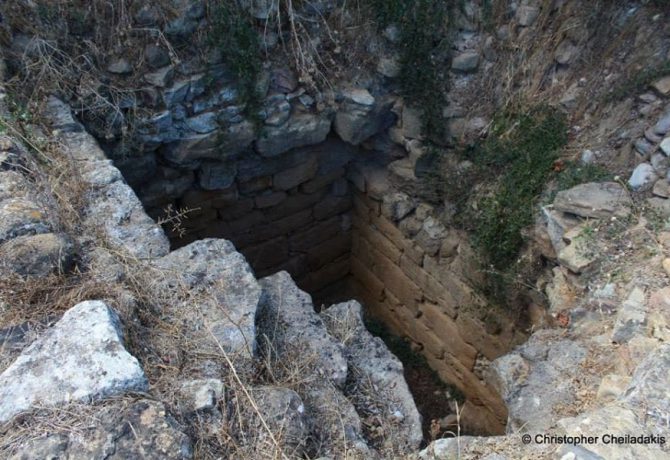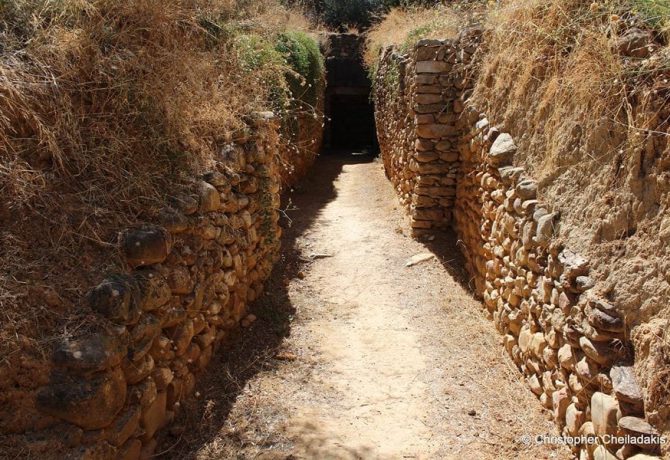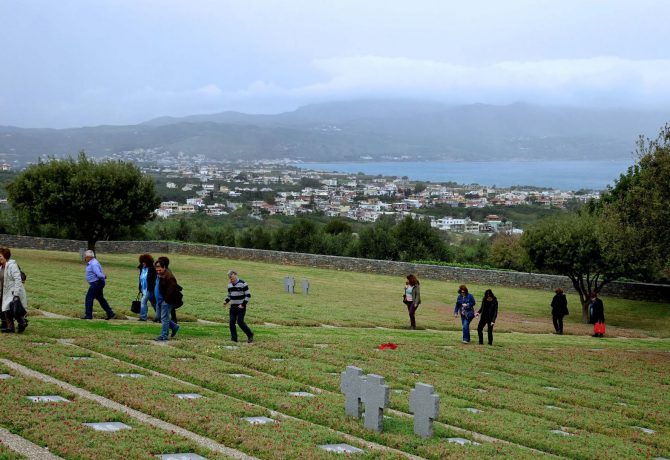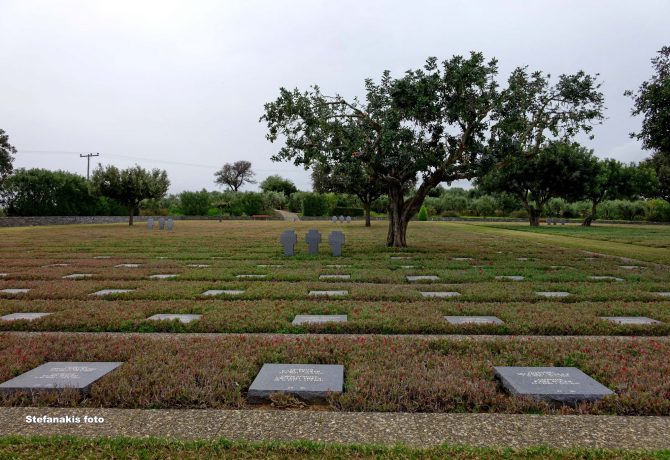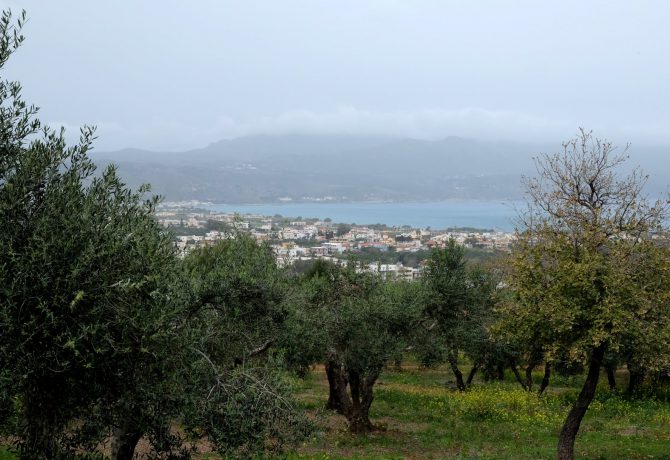Surprisingly comfortable place to spend a holiday is located 10 km from Chania. The village of Agia Marina is different from other small resort areas. Life is in full swing here, nightclubs work, numerous taverns feed guests with delicious and healthy food, a large number of bars are open on the beach. Resort hotels offer comfortable accommodation and all kinds of tourist services. The latter should be used if there is a desire to know Crete from the inside. Employees of hotel complexes will help to make excursion routes, choose a guide, rent a car or scooter. Some interesting objects are located in the village, others are located outside it.
Island of St. Fedor (Agios Theodoros)
The main attraction of the resort is the island of St. Fedor. It is located at a short distance north of the village. In the 16th century, two Venetian fortresses were built on this piece of land. One was named after St. Francis, the other in honor of St. Theodore. A church was built on the territory, which later gave its name to the entire island. The fortresses could not resist the onslaught of Ottoman troops and were completely destroyed in 1645. They were the first to take the blow of the Turkish military forces. Today, only the foundations remain of all the buildings.
Despite the fact that the island is in close proximity to the coast, you can visit it only once a year – on the day of St. Theodore (June 8). By decision of the authorities, a reserve was created here. The mountainous terrain is inhabited by wild Cretan goats Kri-Kri. On the day of visits, you can observe their measured life, and at the same time take part in the holiday. By the way, if on this day there is bad weather or a storm begins, then the spectacle is postponed to another date.
Boats, boats and boats depart from two berths:
- Directly from the village of Agia Marina
- From the port of Platanias
There are no other ways to get to the island of Agios Theodoros. The territory is under protection, illegal invasion is punishable by large fines. By prior arrangement, you can spend the whole day on the secluded beach of the island.
Church of Agia Marina
Five churches have been built in the village. But the greatest interest among tourists is the main temple of the resort, consecrated in honor of St. Marina. She did not give the name to the whole village for nothing and is its patroness. The name Marina translates as “sea”. It protects against slander, libel and enemy attacks. According to Christian legends, it was she who defeated the devil during her lifetime, and now helps people whose soul was possessed by malice, drives demons away from their deathbed.
All the churches of Agia Marina were built between the 10th and 16th centuries. They are lined with stone, the roofs are covered with tiles. The village has never been the center of global military conflicts, so the temples have been preserved in their original form. The peculiarity is not only the appearance. Inside, the walls are covered with murals that are of artistic and historical interest. Travelers claim that it is possible to know the roots of Orthodoxy only in Greece. In the churches of Agia Marina, they encounter the canons of icon painting, salaries trimmed with gilding, inscriptions in the generally accepted church language. A parallel can be drawn between the Cretan churches and the majestic cathedrals of the Golden Ring.
All churches are active. Parishioners prefer to spend big holidays in the spacious church of St. Spyridon. It is here that at Easter the priest distributes the Holy Fire to the faithful, an effigy of Judas is burned in the square, and bright fireworks are launched into the sky. You can get around all the temples of the village in one day. Tourists do this to choose for themselves the most suitable for attending services, prayers.
Address: Agia Marina 730 14, Greece
Nerospilja Cave
After a walk through the village beauties, it’s time to go outside the village and get acquainted with the natural attractions. World fame among speleologists brought the cave of Nerospilya, located one and a half kilometers from Agia Marina. It is a chain of corridors that connect spacious underground halls. The walls, ceiling and floor are decorated with stalactites and stalagmites, the atmosphere is saturated with secret religious knowledge. In ancient times, rituals were held here, many artifacts have not yet been found, the place is little explored.
The cave is located on the territory of private ownership. To get here, you need to ask permission from the owners. The place is not landscaped, so you should take care of comfortable shoes, water and sandwiches. Lovers of natural beauty not made by hands get a real pleasure here. It is advisable to go here accompanied by a guide, as well as to forget to take with you the minimum equipment of the digger (helmet, rope, flashlight). One of the streets of the village is called Νεροσπηλιά. It takes tourists on the trail towards the cave. The road passes through hills overgrown with bushes and grasses.
Ruins of the ancient temple of Athea
From the ferry pier of Agia Marina you can reach the island of Aegina, in the north-east of which are the ruins of the ancient Greek temple of Athea. The goddess, the daughter of Zeus and an earthly woman, was considered the patroness of the island. Initially, her veneration took place only in the territory of Aegina. In her honor in 570-560 YEARS BC was built a temple in which religious rituals were held. Athea was the goddess of fertility, wealth and agriculture. According to the research of archaeologists, on the site of the dilapidated temple there was previously an older sanctuary, burned during a fire in 510.
The ruins were discovered in 1811 on top of a picturesque hill 13 km from the main town of Aegina. To this day, the colonnade, the foundation, the gallery, the three-stage terrace have been preserved. All sculptures and artifacts found during the excavations were taken to England, where they were sold at auction. Most of the collection was bought by Ludwig I of Bavaria. He placed the finds in the Munich Glyptothek, where today they can be seen by anyone. On the territory of the ruins of the ancient temple, the Athea Museum was created. It works constantly, the entrance is 6 euros for adults, discounts for students, pensioners and children are provided.
From Agia Marina to the ruins there is a bus. You can walk around 40 minutes. The distance is 3.1 km. In the vicinity there are hotels, apartments and villas that can be considered as accommodation or a stop for the night.
Address: 18010 Aegina Island, Attica region, Greece
Site: http://odysseus.culture.gr/h/2/gh251.jsp?obj_id=535
Lake Agia
One of the popular hiking trails leads from the village of Agia Marina to the man-made lake Agia. It is located in the Fasos Valley, which is considered the wettest in Crete. The creation of an artificial reservoir was engaged in the state organization for the energy supply of territories. Initially, the lake was intended for the production of electricity. Now there is a nature protection zone. The station is closed. Irrigation works have been reduced. Because of this, some coastal areas are tightened by the tina and they become unsuitable for people’s recreation. But attract numerous flocks of migratory birds and other representatives of the fauna. The shores are covered with vegetation. About 200 species of flora grow here. The lake covers an area of 450 hectares. This area of wildlife is perfectly landscaped for visiting and walking. Along the shore there is a wooden path, from the bridges the water surface and birds floating on it are clearly visible. In some places, the water cascades beautifully and can serve as a backdrop for memorable photos. The name of the lake in translation means “Holy”.
Galatas village
6 km from Agia Marina is a convenient resort village Galatas. Guests will find a beautiful beach Kalamaki, numerous taverns, comfortable hotels, an interesting museum of local lore. It is a Cretan country house, fully equipped and decorated with old traditions in mind. The premises are arranged wooden furniture, devices for the production of rakia, home textiles, olive oil. Framed on the walls are photographs that the creators collected throughout the island and still gratefully accept as a gift from their guests. Cretan scrap is not only a place to get acquainted with local folklore, it is a center for communication and exchange of news. Here you can learn all the latest news, stories from the life of the population, legends and myths associated with the places of worship of the coast. Admission is free.
Ferriso Village
Continuation of acquaintance with the history of Crete inquisitive tourists is waiting in the village of Ferriso. It is located in the gorge of the same name. The natural features of the relief made it once the center of the origin of the Cretan resistance movement. The inhabitants were distinguished by special courage, which inspired the population of the island in the struggle for liberation from the invaders. The leader of the movement, Eleftherios Venizelos, made the village his headquarters (1905-1912), from here he led an uprising that, although defeated, gave impetus to the further reunification of Crete with Greece in 1913. From 1898 to 1912, there was a so-called autonomous Cretan state, headed by the Crown Prince Of Greece.
In Ferriso, fighters for the liberation of their native land from the Turkish conquerors in the late 19th century took refuge, there are still rusty anti-aircraft guns that protected the sky of Crete during the Second World War. The general atmosphere reminds of the past heroic times, although today the tourist infrastructure for a comfortable stay is being equipped here. Houses, villas, rooms are rented. Hotels have not yet been built, but it is only a matter of time. Of the significant objects, you can visit the house of Mother Venizelos, the Museum of the History of the Resistance and the Historical Folklore Museum, the Byzantine Church of St. Geogrius.
It is best to arrive in the morning (museums are open from 08.30 to 14.00). During the day, a large number of tourist groups gather on the streets, it becomes a little uncomfortable and uncomfortable, since from two days to 17.00 a siesta is announced in the village. It is comfortable to visit Ferriso in the evening. museums open at five in the evening and are open until 20.00. Travelers recommend ordering lamb dishes in the tavern. According to them, lamb is not cooked so tasty anywhere else. The assortment necessarily includes mountain honey, local moonshine and malotira grass, which is used to brew delicious tea.
Ferriso Gorge
Thanks to this picturesque gorge and its sheer cliffs, it was not easy for the Turkish occupiers to reach the village and destroy the Crete resistance movement. The terrain is surprisingly colorful. It is buried in greenery. Here grow oaks and chestnuts, rare mountain grasses, mountain animals are found. The walk does not take much time (from the strength of an hour and a half), but the body will receive an impressive dose of fresh mountain air. The area has long been chosen by climbers and climbers. Experienced athletes hone their skills over steep cliffs, beginners take their first steps under the supervision of instructors in natural climbing walls. You can spend the night, eat and relax in the village. Residents will hospitably provide a room and meals for a reasonable fee. A tourist train regularly goes to the village.
Maleme Village
The village of Maleme is famous for its memorial in honor of those who died during the Second World War. Here was based the airfield, which landed the nazi landing, which began the occupation of the island. The strategically designed Cretan Airborne Operation allowed the conquest of the entire territory in 10 days, from 20 to 31 May 1941. Maleme airfield was the primary target of the German troops, as it was the only one capable of receiving heavy Junkers. Today, those bloody events are reminiscent of the cemetery located in the southern part of the airfield. It has become a memorial to the memory of thousands of dead. Near the main beach of the village are still found fragments of military equipment. Currently, Maleme is a cozy resort town, where tourists come from all over the world. On the coast they are waiting for hotels, water activities, quiet rest.

